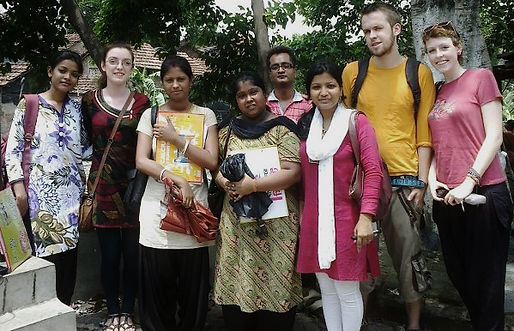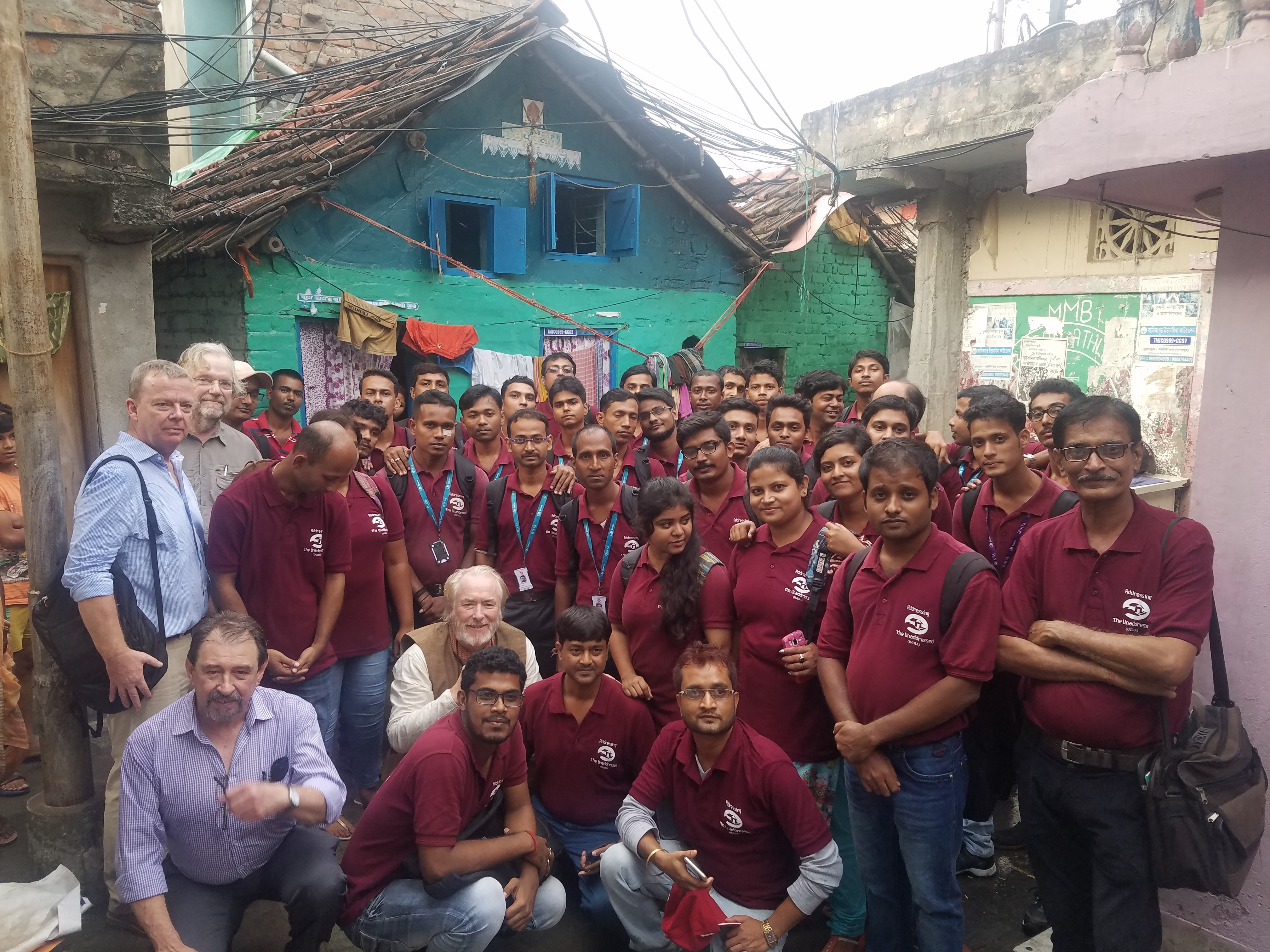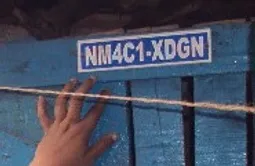In the beginning
In March 2012 we began testing in a small slum of Kolkata in collaboration with The Hope Foundation and The Hope Kolkata Foundation being its implementation agency to carry out the exercise in the field.
 Manjushree Das, Niamh Caffrey, Nabanita Dey, Mautushi Chakraborty, Subhashis Nath, Manidipa Sarkar, Liam Madden, Lydia Hoban - the Hope Foundation & first ATU team of 2012.
Manjushree Das, Niamh Caffrey, Nabanita Dey, Mautushi Chakraborty, Subhashis Nath, Manidipa Sarkar, Liam Madden, Lydia Hoban - the Hope Foundation & first ATU team of 2012.
Since then
Between 2013 and 2018 ATU worked on its own carrying out addressing and surveys of the community, addressing about 10,000 homes every year – a total of about 40,000 homes. The ATU team
The ATU team
In 2018 ATU formed a partnership with a Google mapping team led by David Martin and the work then took off with some 150,000 addresses being assigned between June 2018 and late 2019. Once the COVID epidemic was over, the work restarted, this time with Children In Need India carrying out the work again with Google support generously led this time by Anal Ghosh with generous assistance from Ankush Sud. By November 2023 almost another 38,000 houses had been addressed.
 The ATU and Google Team with UPU Observers November 2018
The ATU and Google Team with UPU Observers November 2018
February 2024
We have worked now in as many of the 144 wards in Kolkata as possible.
We have addressed over 200,000 dwellings in underserved areas of Kolkata.
The work was a carried out with the help of Children In Need India is involved the work continues at the rate of over 1,000 per week.
Their working methods are becoming more efficient as they work, and the cost per address decreases accordingly.
The addresses then can be incorporated into the work that CINI and other NGOs are carrying out in Kolkata, helping field workers more efficiently organise their work and access their service users.
Because of this addressing work, bank accounts, voting cards, Aardhar cards and electricity accounts are more accessible to the people addressed.
The post office can deliver to these people mail which has their new postal address on it (rather than it being delivered to a community hall).
And those who have received as address have told us that because of their address they can more easily access services and identify to others where their home is located.

What the future holds
Our work will not finish anytime soon. Within 35 years, 70% of the world's population will be living in urban areas, with as many as 1 in 2 living in unplanned settlements!
It is our prediction that governments and the authorities will have only two options.
- Move the people in unplanned settlements to the outskirts of the urban areas.
- Or leave them where they are.
The authorities will struggle to find funding for the former. Thus leaving the latter as a more attractive option. This however will only work, should the dwellers themselves be empowered to take care of their own lives and be given opportunities to improve their quality of life. We believe a unique (postal) address will deliver such opportunities.
The Technology
Since June 2018 we have used Google's Plus Code to uniquely address the slum dwellings.
This code is open source.
https://en.wikipedia.org/
wiki/Open_Location_Code